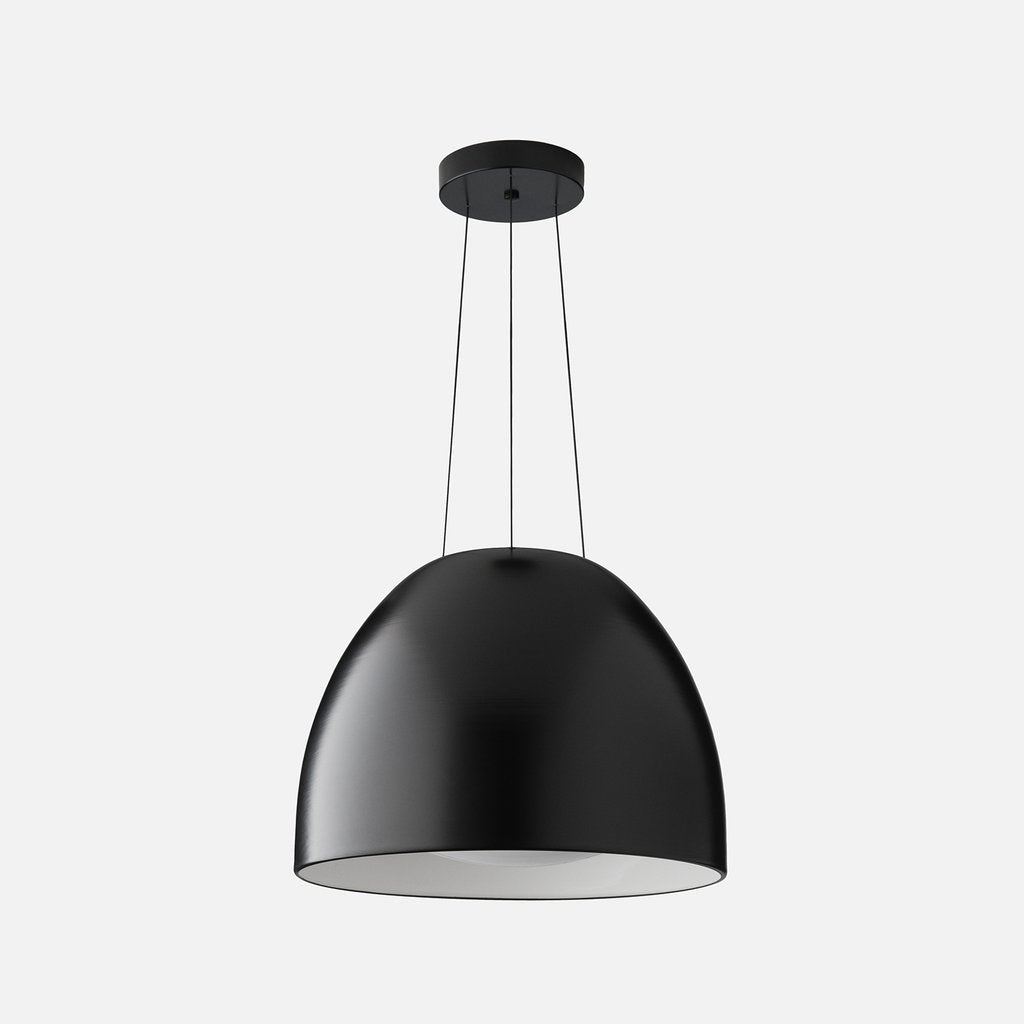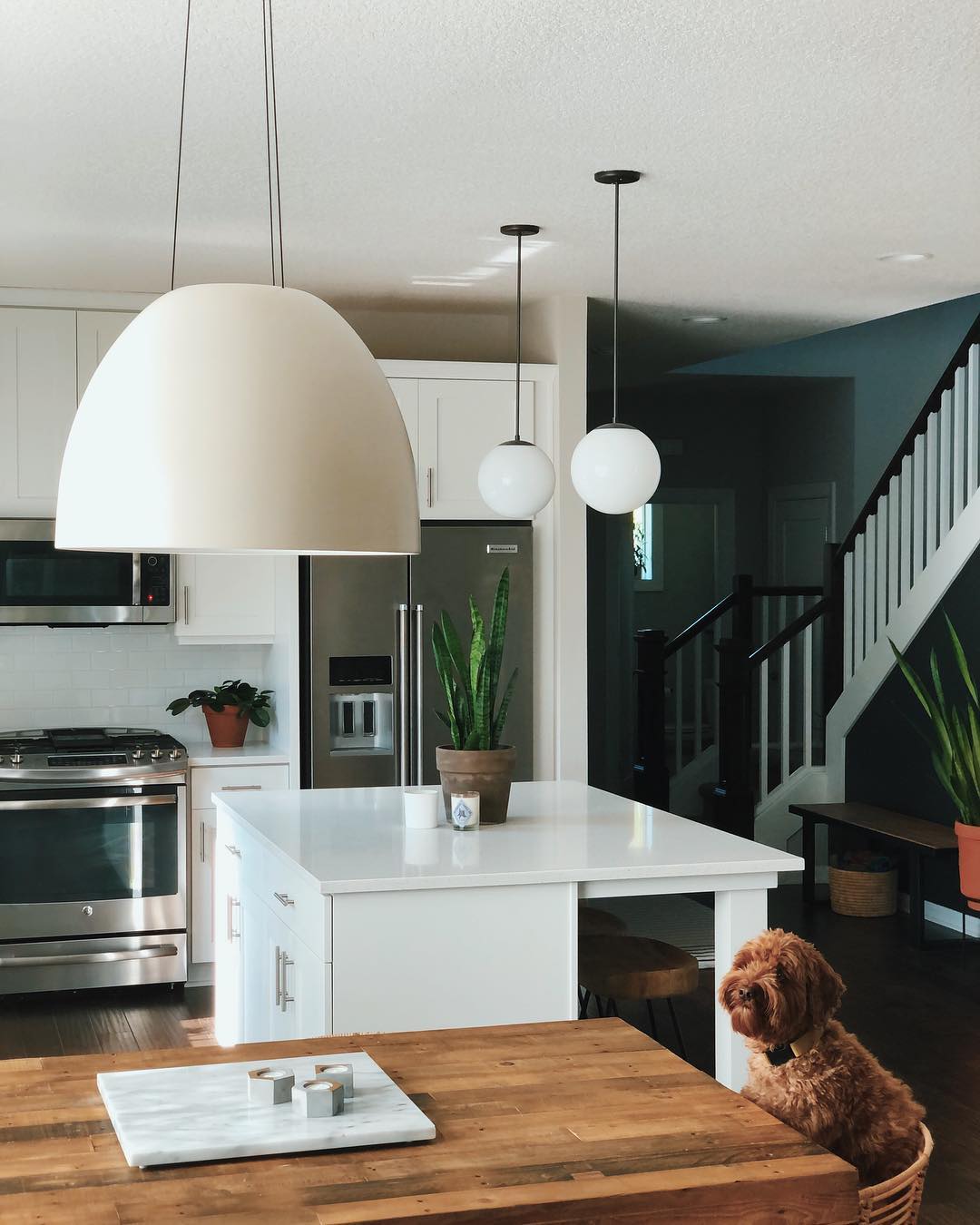Spotlight On: The Ostara Pendant

There’s something about the reassuring shape of an egg that imparts a feeling of potential. As part of our Spring 2019 launch, we captured some of that energy in a brand new pendant called The Ostara. Named after a fertility goddess of the same name, The Ostara is one of our most visually powerful and innovative pendants to date. If you want to understand how the Ostara came together, the best place to start is its marriage of technology and aesthetics.

“Ostara was developed as a modern departure from Factory 9,” says Associate Product Developer Sarah Hashiguchi, who led the Ostara development. The Factory 9 was an iconic Schoolhouse pendant that was especially popular in commercial spaces. “We wanted to retain the size and grand presence of the fixture, but let it evolve with the times. In doing so, it was important to update the lighting components alongside the silhouette, which led to a form very much informed by function.”

In our Portland factory, you can find the Ostara in its many stages of production spread among every floor. In the paint booth, workers spray the matte satin paint to a flawless finish on the Ostara’s canopy and shade. Once these parts are dried, they’re sent down to the second floor to be assembled. Here, assembly specialists wire the canopy, string the dual-purpose suspension cables, and wire the LED emitter. They then affix the acrylic diffuser into the underside of the shade using a special bracket system that was designed in house. Each fixture is then extensively tested before being wrapped up and sent out the door.

Longtime fans of Schoolhouse may remember the Factory 9, which used a very similar spun aluminum shade to the Ostara. This shade, with its clean, simple lines and formidable size, provided a good jumping off point for developing a new fixture that felt both modern and classic. Then the team introduced Integrated LED Technology to the development process. Where the Factory 9 had a more cluttered suspension assembly above the fixture that involved support cables and a free-hanging power cord, The Ostara offers a more simplified approach. “A major motivation for using LED was to get rid of the cord and to streamline the look of the fixture,” says Product Engineer Brandt Clawson. Because LED lights require such a low power voltage for operation, the fixture is now powered through the same cables by which it is suspended.
LED technology changed other elements of the fixture, too. The product development team implemented a low-profile, disc-shaped canopy that allowed more of the focus to rest on the fixture’s shade. Since LED lighting can sometimes lead to bright spots, the team developed a diffuser (an opaque lens which helps to distribute the light more evenly) to address this. The solution was a custom ellipsoid diffuser made from an acrylic polymer. From underneath, the diffuser looks like a glowing moon held within the elegant margins of the shade. While subtle, this geometric interplay is one of the fixture’s most interesting features.

via @thomasguy
LED technology allowed the product developers to meet their design needs, but it was also a good investment in the future. “Broadly speaking, we’ve been moving more and more of our fixtures to LED for several reasons,” Brandt continues. “The manufacturing technology for LEDs has allowed the price to drop substantially. They’re also extremely energy efficient and have an excellent lifespan. Plus, the light temperature options available these days are so much better than in the early days. You can get LED systems that are very warm and inviting that don’t sacrifice on performance.”
In some instances, LED technology can simply be retrofitted to existing incandescent fixtures, as is the case with LED light bulbs. But these systems often sacrifice some of the LED’s natural efficiency and longevity. With Integrated LED Technology, all the necessary electronics for taking high voltage alternating current electricity from the wall outlet and converting to low voltage direct current that is used in the LED system can be built into the canopy and LED emitter. This is especially helpful in a hanging pendant like the Ostara because it means the owner won’t need to change light bulbs for the life of the fixture.
All of this modern technology caused the fixture’s identity to shift from one of purely utilitarian aesthetics to one with a distinctly modern appeal. Having cleaned up the more overwrought details and having simplified the silhouette, all the product developers needed was to find the perfect finish options. They chose a Shell White finish to enhance the egg-like shade shape. Providing a Satin Black paint option gave a high-contrast counterpoint to the Shell White while also giving the family a sophisticated, monochromatic versatility that could pair with a wide variety of decors and color palettes. As a final subtle but significant design detail, the product developers chose a glossy interior white finish that helped to reflect light and also provided a visual contrast to the exterior matte satin finishes.

“One could say many of the Ostara’s details were born of a desire to edit and refine a pre-existing fixture concept,” says Sarah. “But if the Ostara demonstrates anything, it’s that subtle edits in the evolution of a product can breath new life into its lineage.”








